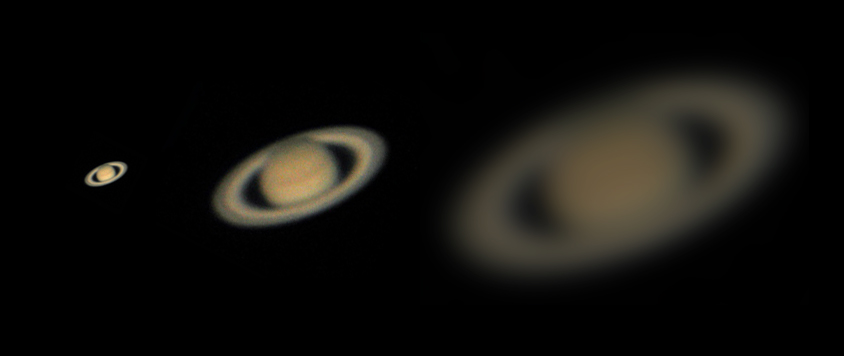Number 3: Use LOW magnification, and make sure your scope is properly adjusted!
If you take away only one thing from reading this page, let it be this : Magnification is NOT a measure of a telescope's quality or capabilities! Many beginning astronomers think that high magnification is they key to great viewing. This is a common misconception. A telescope's "power" is a function of the diameter of its mirror (or lens). In general, bigger is better for telescopes!
Ask any experienced amateur astronomer and they will tell you that most observing is performed using low magnification. For small telescopes, low magnification (or "power") means anywhere from about 30x to about 50x. High power is useful (and often necessary) for viewing the Moon, planets and double stars. However, initially finding a planet (or any object) is much easier to do using low power. Even users of large telescopes use lower magnification most of the time. The highest magnification that is useful in a typical beginner telescope is in the range of 100x to 200x . Small telescopes do not gather enough light for satisfactory high power views of galaxies and nebulae. Although it may be technically possible to achieve, using a small telescope at a magnification around 500x will virtually guarantee that you will see nothing at all!
The image below shows the results of using appropriate magnification and excessive magnification. The leftmost two images of Saturn are representative of what you might expect to see at low and high power respectively (in a typical entry level scope). The image at right shows what happens when magnification is pushed to excess. The image is bigger to be sure, however the clarity is terrible, the image will be very shaky and much dimmer. No additional detail can be seen as a result of this extreme (but useless) magnification! The image at right is typical of what you might see in an entry level telescope that claims "675x magnification". The most magnification you will normally use is about 50x per inch of lens (or mirror) diameter. For a 3" scope this would be about 150x. To emphasize one more time: most of your observing will be done at LOW magnification!

Representative views of Saturn at low, high and excessive magnification! (view this image from about 5 feet back from your monitor to get a more realistic sense of what the real thing will look like). Note that things get dimmer and less clear as the magnification goes up!
Another factor that can impact the quality of what you see is alignment (or "collimation") of the optics. Newtonian reflector telescopes require this from time to time (optics in refractor telescopes almost never require adjustments). If the optics are out of alignment, you will still "see" through the telescope, but very likely the images won't focus properly, or the image will seem somewhat distorted. The manuals for telescopes from all quality vendors will include instructions on how to collimate the optics. Once adjusted the alignment will hold unless the scope takes a good "bump" (or a ride in the trunk of a car on a bumpy road). Collimation tools are also available for around $40 and are a great help simplifying the aligning the optics. If you want to eliminate the (occasional) task of aligning optics, a refractor telescope would be the way to go.

No comments:
Post a Comment